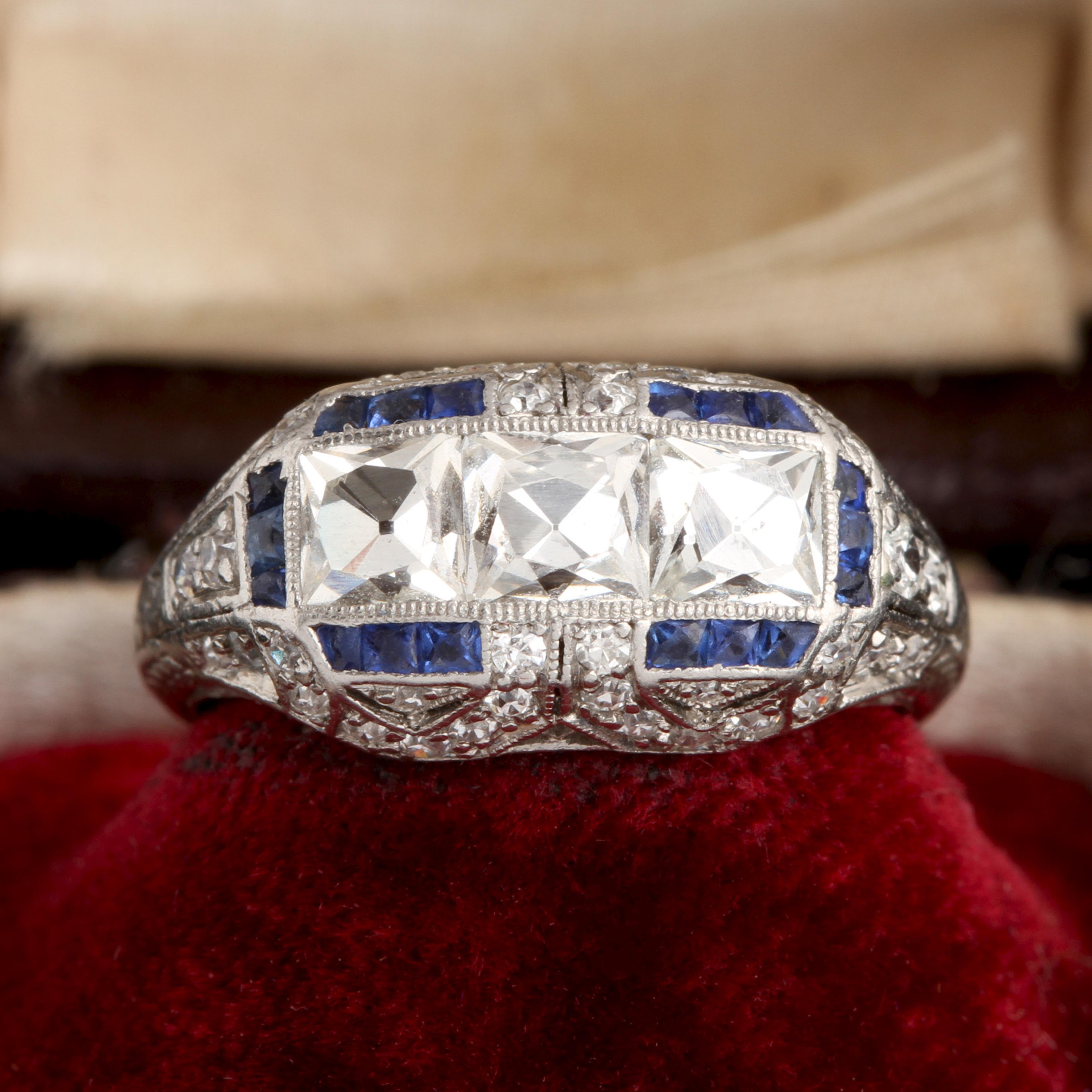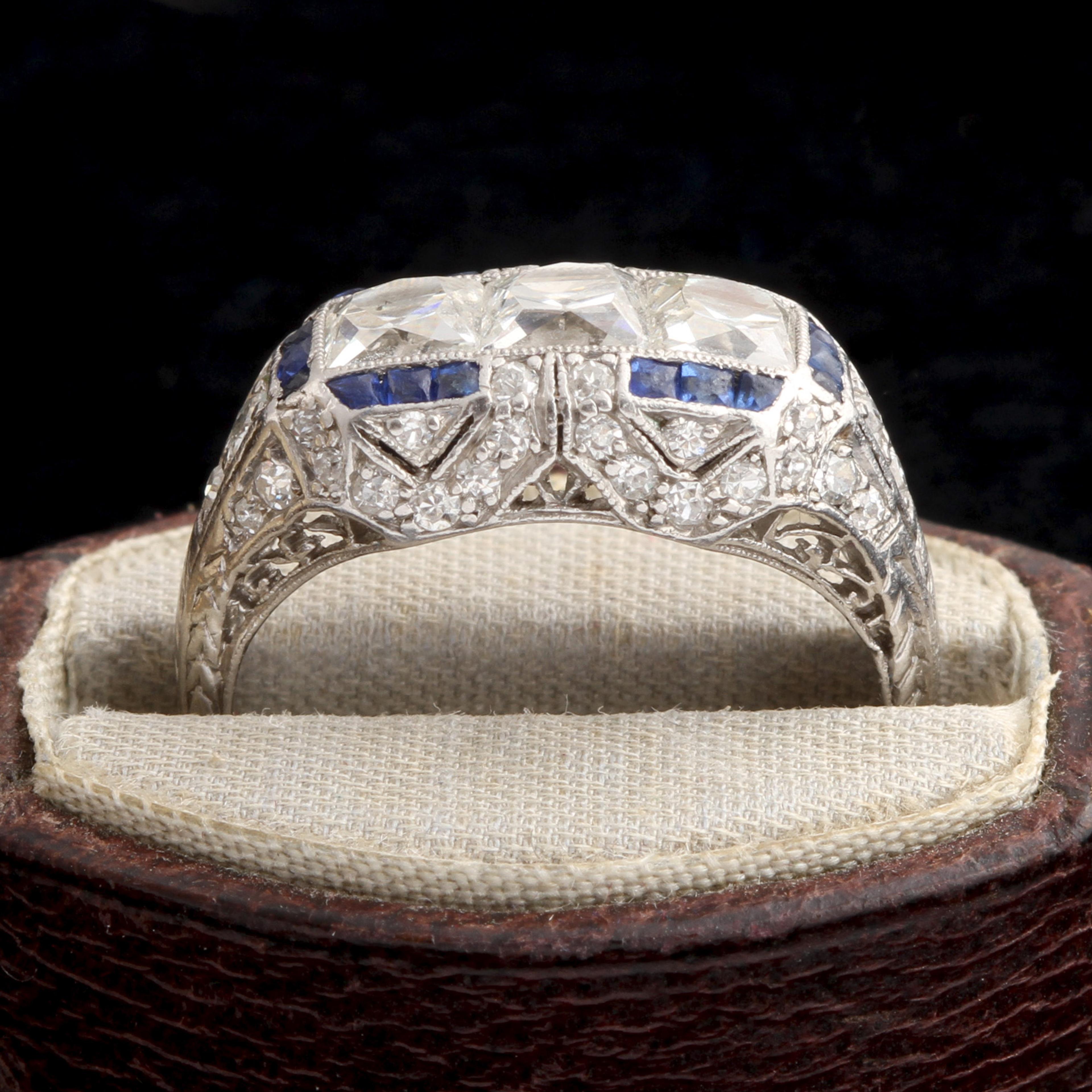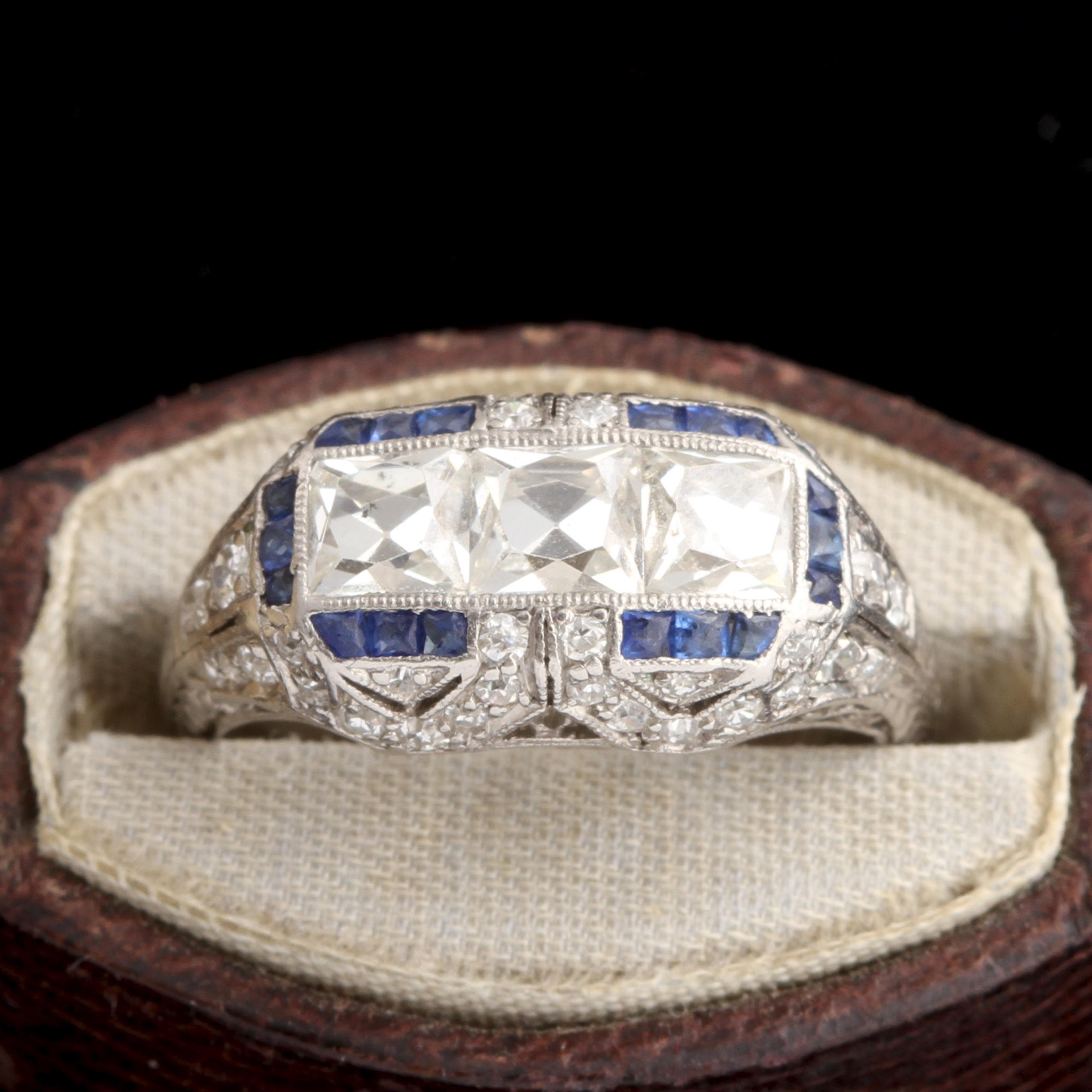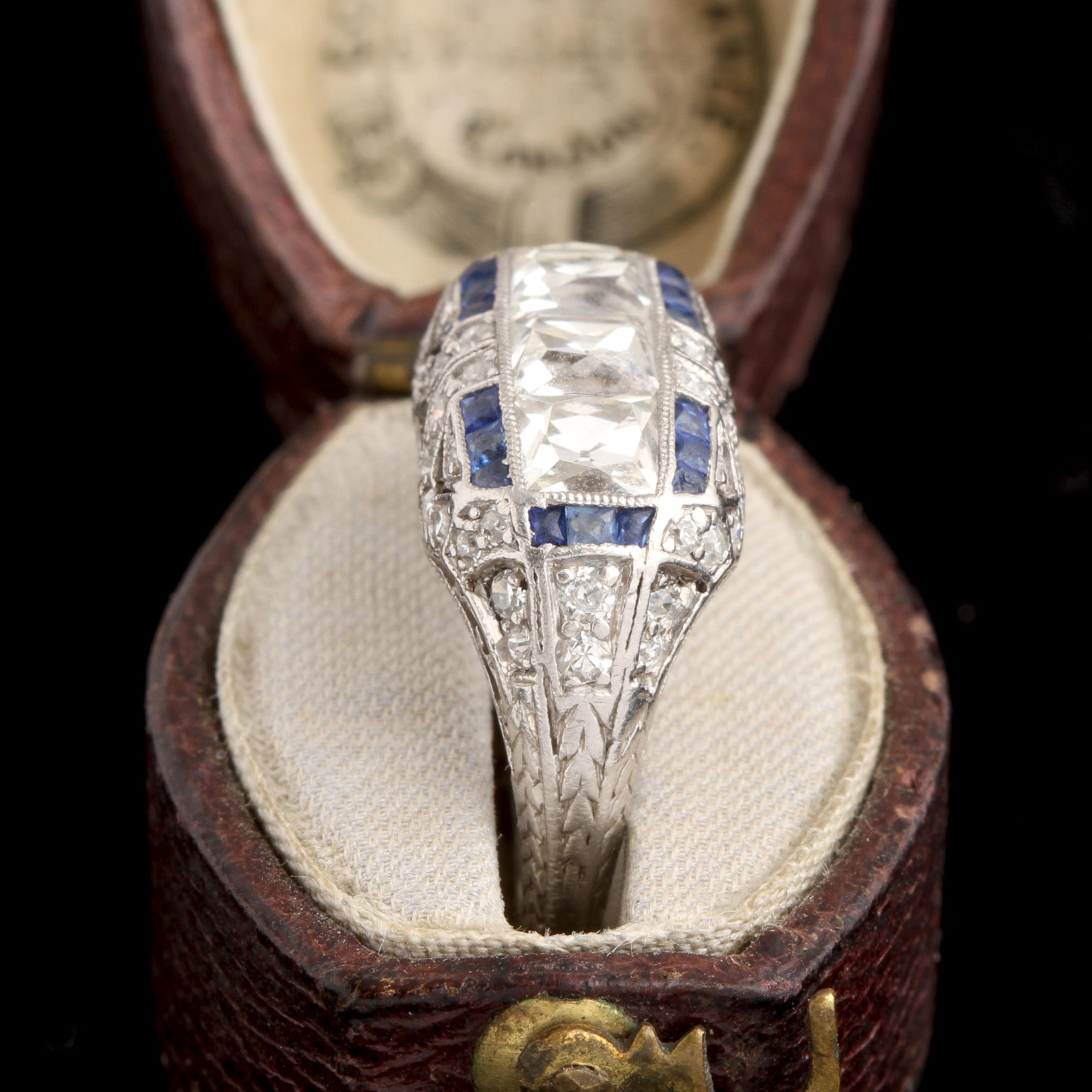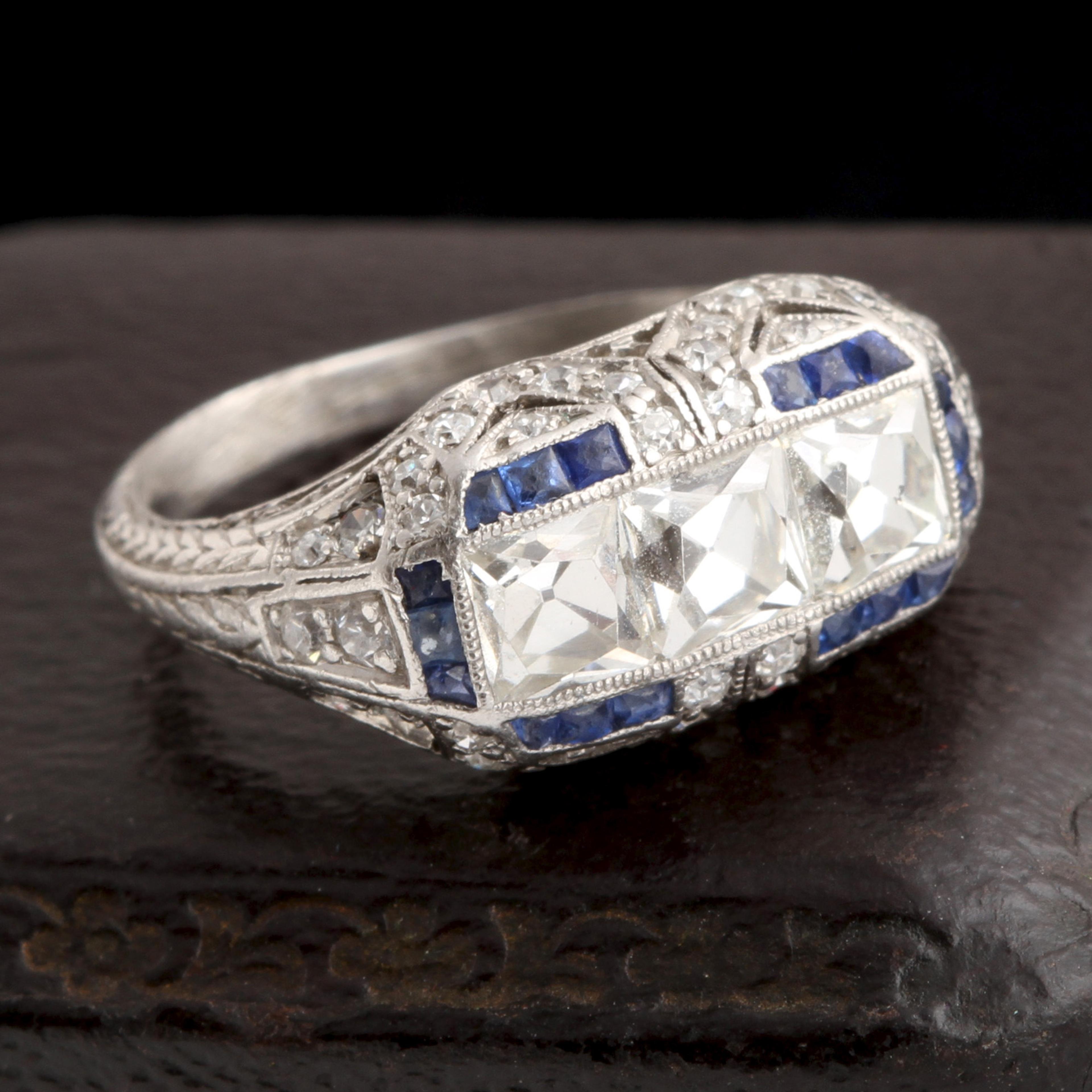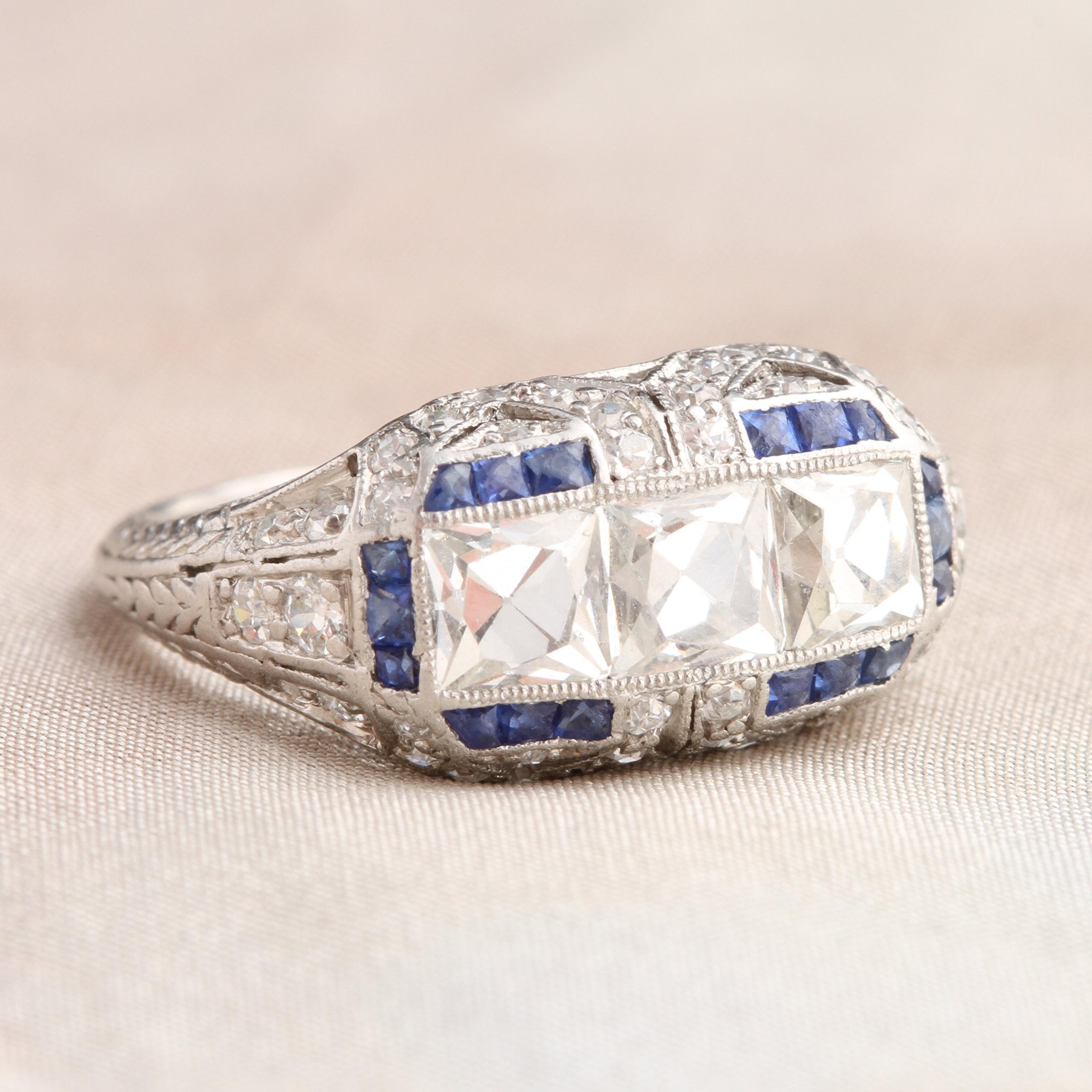The three stone style of this Deco engagement ring is known as a trilogy ring. Trilogy rings have three primary stones which represent the past, present and future. We've seen many beautiful trilogy rings come and go, but never one quite as distinctive as this one. Crafted in platinum, with a wheat motif on the shoulders, calibré cut sapphires, and a zig zagging gallery. Spectacular.
thedetails
- Materials
Platinum, 3 x .50ct French cut diamonds (1.5ctw), 44 old European cut diamonds (.75ctw), 18 square French cut calibré sapphires (.10ctw)
- Age
c. 1930
- Condition
Excellent
- Size
4.5, can be resized; 8.5mm head, 1.9mm hoop
Need more photos?
Send us an email to request photos of this piece on a model.
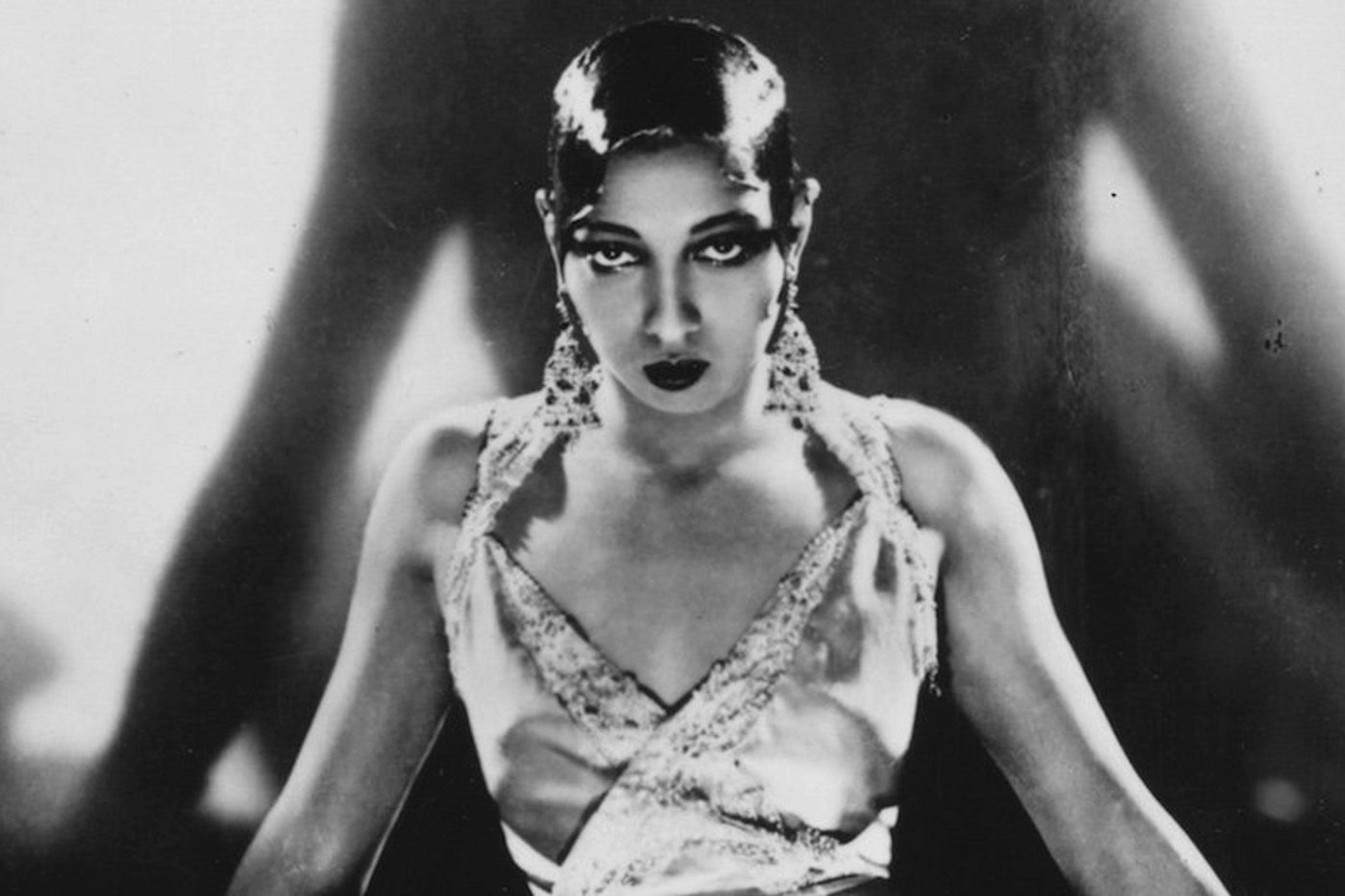
Aboutthe
Art DecoEra
1915 — 1940
Motifs like ziggurats and sunbursts, stripped of visual clutter, conveyed the optimism of an increasingly technological world. In jewelry, the predominant use of white metals let colorful gems take center stage. Stones that were opaque and true in color, like lapis lazuli, onyx, jade, coral, and opal were worked into designs alongside more precious and brilliant gems, like diamonds, sapphires, rubies, and emeralds. Extra-long beaded necklaces and tasseled “sautoirs” followed the narrow flapper silhouette. The baguette cut was an Art Deco innovation, and the decade saw increased use of other angular diamond cuts, like the precise calibré cut and the emerald cut. Synthetic colored gems, specifically ruby and sapphire, were celebrated as a scientific marvel. Marcel Tolkowsky, 21 years old at the time, published the design for the round brilliant cut in 1919.
